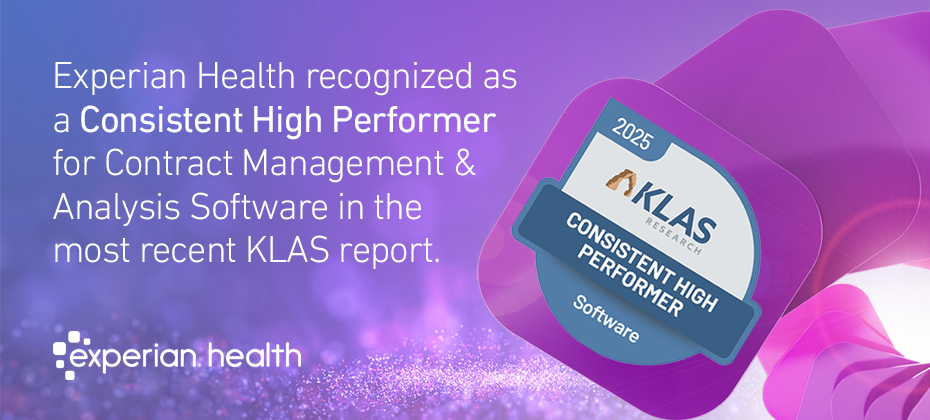
Nearly 46% of patients say being able to manage their health online is their top priority in accessing care, according to Experian Health’s State of Patient Access 2024 survey (SOPA). However, the availability of a “digital front door” in healthcare – with online scheduling, mobile registration, and frictionless payments – is not yet meeting demand. Many patients still face convoluted booking systems and stacks of repetitive paperwork.
Meanwhile, consumer-friendly tech and retail giants are edging into healthcare. As disruptors set new standards for simple and convenient care, traditional providers are under pressure to open their digital front door to remain competitive. Many are already investing in AI and automation to simplify workflows, cut costs, and upgrade the patient experience.
Could 2025 be the tipping point for healthcare’s digital transformation? A digital front door strategy could help more providers boost patient engagement, simplify the patient experience and increase profitability.
What is a digital front door?
The digital front door is more than a well-designed website. It’s a single point of access that gives patients convenience, choice and control at every touchpoint in their healthcare journey. It promises patients faster appointments, fewer headaches and more coordinated care. From their mobile device or computer, they can log in to schedule visits, sign intake forms, update insurance details, see costs upfront and even settle their bills. It’s secure, easy to use and lets patients handle tasks on their own time.
On the back end, patient-facing digital tools can integrate into the provider’s existing systems to improve workflows, reduce manual tasks and generate analytics to simplify care.
What are the key benefits of implementing a digital front door?
- Patient satisfaction:According to SOPA, 60% of patients want more digital and mobile options for communicating with their provider, scheduling appointments and managing payments.
- Fewer no-shows: Patients are less likely to cancel or no-show when they can schedule and manage appointments that work for their time and needs.
- Frees up resources: Automating repetitive administrative activities means staff can focus on higher-value activities.
- Fewer errors: Manual processes are rife with data entry errors that increase the risk of denied medical claims and add time on the back end to resolve. Digital patient intake saves time and money by reducing opportunities for human error.
Essential features of an effective digital front door
What are some of the digital must-haves to simplify access to care? The checklist might include:
- Online appointment scheduling, to make it easy to book, reschedule, or cancel appointments
- Digital tools to complete pre-visit paperwork – even better if these automatically prepopulate patient info to save them time and reduce errors
- Transparent pricing, with tailored information delivered directly to the patient
- A choice of payment methods, including familiar digital options so patients can pay quickly
- Access to a patient portal or central hub for managing appointments, medical records and prescriptions
- Mobile-friendly interfaces and simple designs, so patients can see key data at a glance, from any device, without needing to be tech-literate
- Secure and compliant communications to protect patient data and privacy.
Where to start with a patient-centric digital front door
Three specific tools that would check off the above include the following:
1. Multi-channel patient scheduling
What matters most to patients is being able to see their doctor quickly. Online appointment booking gives them the 24/7 self-service scheduling options they expect. It delivers quantifiable gains for providers too. For IU Health, automating patient scheduling has been shown to do the work of two full-time schedulers, with more than 35,000 appointments booked with self-scheduling.
Experian Health’s patient scheduling software guides patients to the appropriate provider and appointment while keeping the provider in control of their calendar. It integrates with a provider’s website, call center, and physical office so patients can book their next appointment, even outside of office hours.
On-demand webinar: See how IU Health increased one-call resolutions with Patient Schedule
2. Registration Accelerator
49% of providers say that a primary cause of denied medical claims can be traced back to errors in patient registration, forcing health systems to divert revenue to remediate claims that could have been avoided. An automated, data-driven patient registration process improves accuracy, making costly errors less likely. With Registration Accelerator, patients get a text when it’s time to register, instead of completing forms in the waiting room. There’s no need to download an app or create a user profile: they scan the data from their identity and insurance cards, and Registration Accelerator takes care of the rest.
3. Patient Financial Advisor
The SOPA report shows that almost seven in ten providers believe their patients postpone care at least occasionally because they don’t understand the cost of care. Eight in ten patients agree that accurate estimates help them prepare to pay. While price transparency is improving, too many patients still find themselves with bills that are higher than expected.
Patient Financial Advisor delivers a pre-service estimate of the patient’s financial responsibility based on real-time benefit information directly to their mobile device. It takes account of current provider pricing, payer contracted rates, and any relevant discounts or payment plans for greater accuracy. A secure payment link allows patients to settle their bills quickly and conveniently, at any time.
Read more: How to maximize patient collections with digital technology
Choosing the right partner for digital transformation
Implementing a successful digital front door strategy comes down to one key factor: keeping it laser-focused on the patient. When choosing a vendor, providers should ask how the platform will make life easier for patients. Will it encourage proactive engagement? Is it easy to navigate and demonstrably secure? And on the back end, will it integrate smoothly with the provider’s existing systems and workflows – and even improve them?
The right partner will bring specialized expertise for a digital transformation, with the capabilities to meet both patients’ and providers’ needs.
Find out how Experian Health’s Patient Access solutions help healthcare providers open their digital front door to simplify patient care across the entire revenue cycle.


